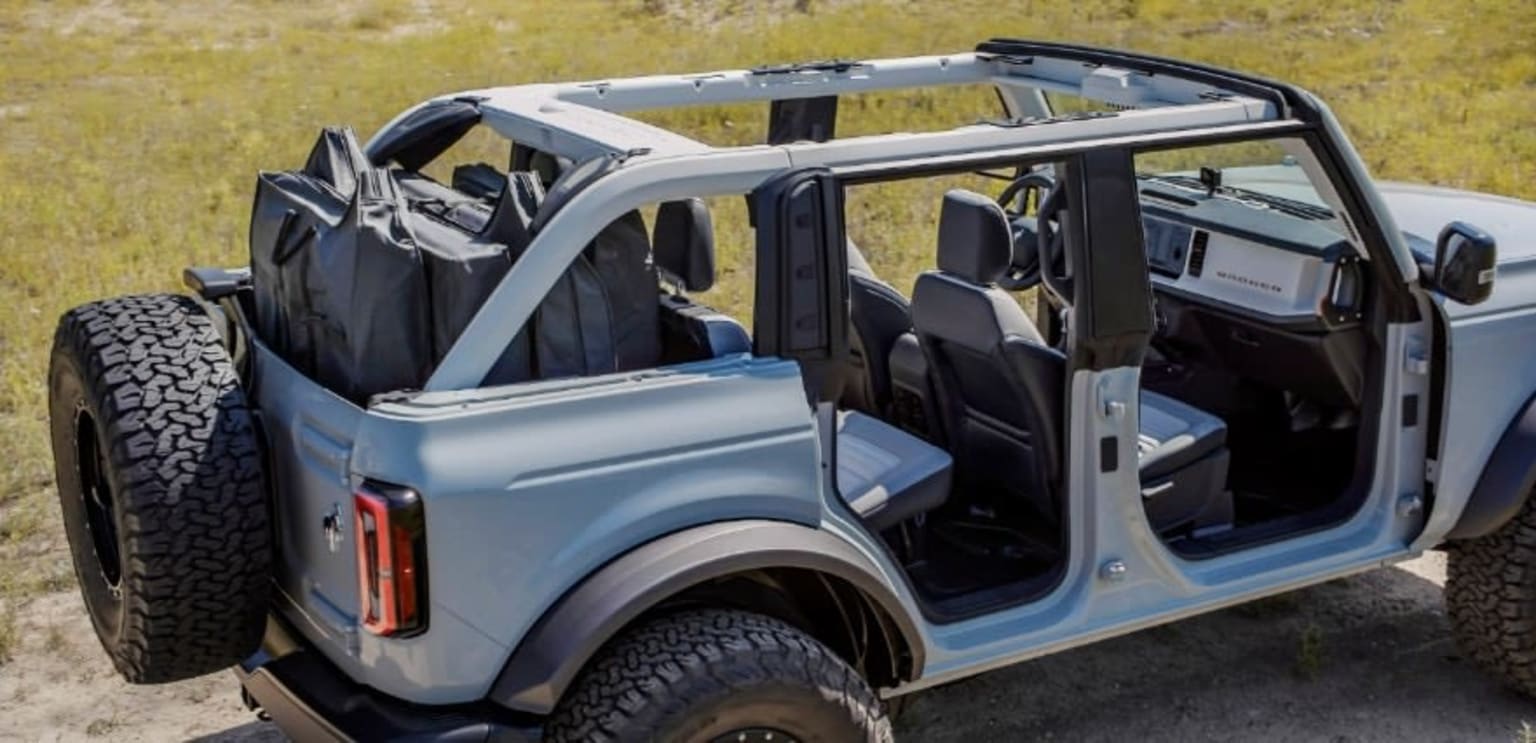
The Ford Bronco vs the Jeep Wrangler
The highly anticipated 2021 Ford Bronco is coming soon and already available to preorder, and many people would like to know how it stacks up against Jeep’s Wrangler. Both of these rugged SUVs have long histories and are designed for off road, open air fun. However, we suspect that even some of the most loyal Jeep fans have joined the thousands who have rushed to get in line for the new Bronco.
Here, we’ll go over some of the key differences between these vehicles. Contact J.C. Lewis Ford to have a personal Ford expert assigned to answer all of your Ford lineup questions - 912.210.5676.
Bronco’s engines are, in general, more powerful. The base engines of the two vehicles are comparable in horsepower but not in torque; the Jeep Wrangler’s Pentastar 3.6 liter V-6 has 285 horsepower and 260 lb-ft of torque, and the Bronco’s turbocharged 2.3-liter, four cylinder engine will have 270 horsepower and best-in-class standard gas torque of 310 lb-ft. When it comes to optional engines, Bronco wins again.
Bronco’s twin-turbo 2.7-liter V-6, optional on the four lowest trims and standard on the top three trims, is projected to have 310 horsepower and 410 lb-ft of torque. The Wrangler’s optional turbo 2.0-liter is less powerful at 270 horsepower and 295 lb-ft of torque. The Wrangler’s turbocharged 3.0-liter diesel churns out an impressive 442 lb-ft of torque, but it provides only 260 horsepower.
While the Wrangler’s manual transmission is 6-speed, the Bronco features a class-exclusive 7-speed manual transmission. Its extra gear is a low-speed crawler gear, not offered by Jeep, and it has a unique crawl ratio of up to a best-in-class 94.75:1. Wrangler features an eight-speed automatic, but Bronco’s segment-first 10-speed gives impressive low gears.
While both vehicles are fully off-road capable, a few helpful features give Bronco an edge. Trail One Pedal Drive enables low-speed crawling which lets you bring the vehicle to a stop without using the brake pedal, making two footed driving unnecessary. Trail Turn Assist helps the Bronco make tighter turns on the trail. When you turn the wheel sharply, the system applies brake pressure to the inside rear wheel, reducing the turning circle radius by 40 percent.
Trail Control, also found on the Ford Ranger, is a low-speed cruise control system for rough terrain. Unlike the Wrangler, the Bronco has a Terrain Management System with GOAT (Go Over Any Terrain) modes, including Sand, Slippery, Sport, Eco, Normal and the additional Mud/Ruts and Rock Crawl modes. All you have to do is choose your mode, and the system sets the driving parameters accordingly. Bronco’s available 360-degree camera system is also perfect for spotting obstacles off the road.
Bronco’s Sasquatch Package, available on every trim and standard on Wildtrak, includes 35-inch tires with 17-inch beadlock capable wheels, an electromechanical transfer case, locking front and rear-locking differentials, larger fender flares, added suspension clearance, and heavy-duty Bilstein shocks. In the words of MotorTrend, the Sasquatch Package turns “even the entry-level Bronco into all-terrain monster”.
In addition, with the Sasquatch Package, the Bronco has best-in-class ground clearance of 11.6 inches and best-in-class water-fording capability of 33.5 inches. According to Car and Driver, none of Jeep’s packages rival the Sasquatch Package.
If you like the look, clearance and traction of big tires, Jeep doesn’t offer any as big as the 35-inch tires included in the Sasquatch Package.
Both vehicles have removable tops and doors, but the Bronco is more innovative with this concept. The roof of the four-door Bronco has a class-exclusive removable hardtop middle panel and a unique design with no crossbar between the front and back rows, delivering best-in-class second-row and overall openness with the top removed.
Bronco’s doors are smaller and lighter than the Wrangler’s thanks to their class-exclusive frameless windows, making them easier to remove and store. You can even store all four doors in the cargo area, so you can decide to take them off whenever you’d like. Another huge advantage of the Bronco over the Wrangler is that the mirrors remain when you take off the doors. Everyone likes to customize their vehicle and make it their own, and Ford will offer a variety of door designs as accessories.
Although both SUVs have a rugged style, they feature upscale interiors and modern infotainment systems. The Wrangler’s standard screen is a small 5.0 inches, but you can opt for a 7.0 or 8.4 inch screen. On the other hand, Bronco’s standard screen is 8.0 inches, and there is a much larger 12.0 inch touchscreen available.
Bronco also has a larger display in the instrument cluster. Bronco’s 12.0-inch screen comes with the new infotainment system Sync 4, which has wireless Apple CarPlay and Android Auto, like Sync 3, but is much quicker than Sync 3 and has other updates. The Wrangler’s Uconnect system is a few years older.
For the adventurers, both infotainment systems have a large area of trail maps to explore, but we can safely assume that Ford’s Sync 4 system will offer more data. With FordPass Performance App, users can choose from a professionally curated list of class-exclusive electronic trail content from professional trail guide providers such as Trails Off-Road and FunTreks.
The Bronco and Wrangler differ in their front suspension. The Wrangler has solid front and rear axles, traditionally preferred for their simplicity and suspension travel, and the Bronco has independent front suspension (IFS). IFS is known to improve ride quality and steering precision, and Ford has promised that the new Bronco will have 17 percent more suspension travel than the Wrangler.
In addition, Bilstein position-sensitive dampers are available on every Bronco trim. The result is much more comfort on the road, which is 99% of the time even for off-road enthusiasts, and better control when covering challenging terrain at high speeds.